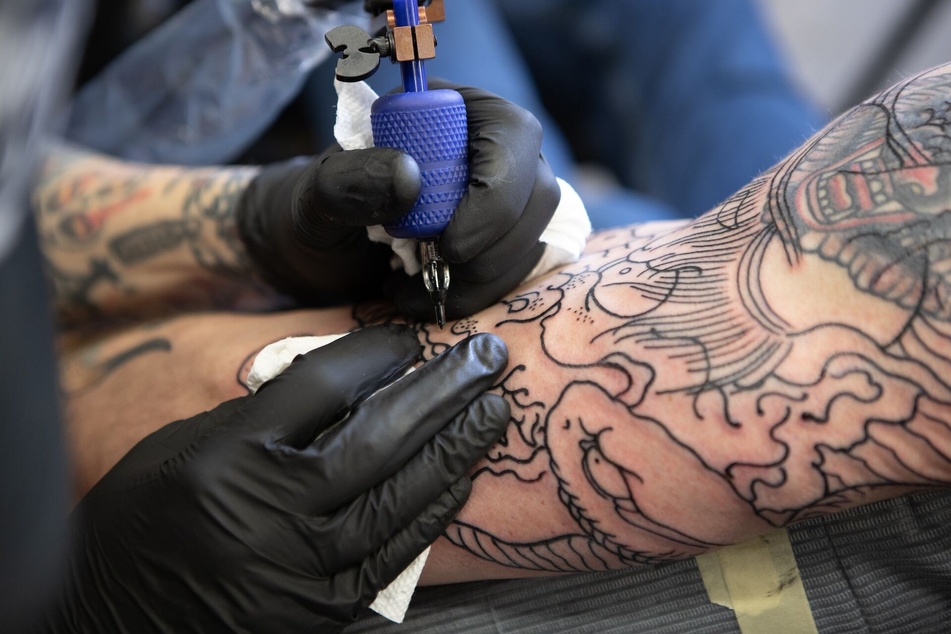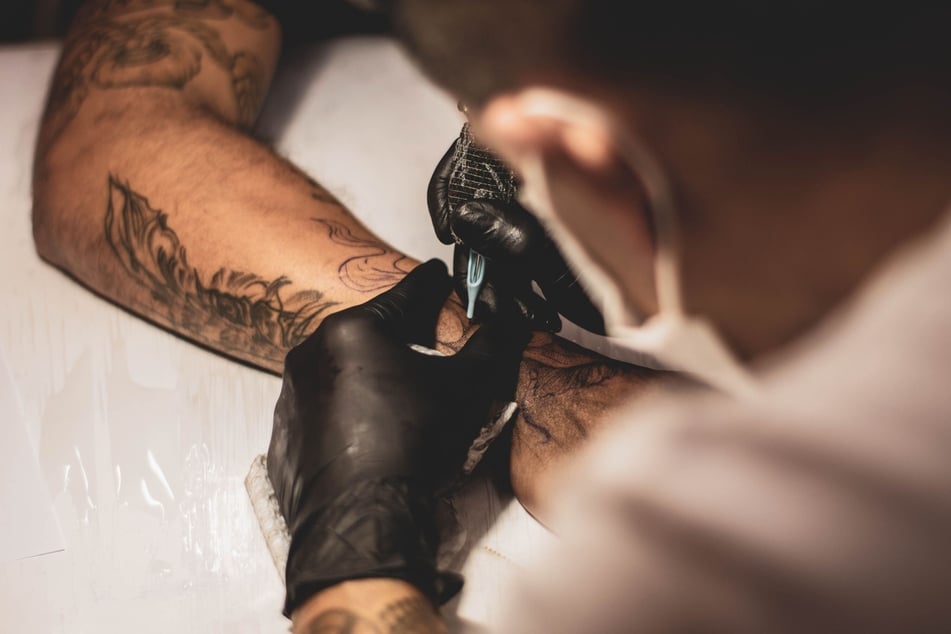Woman details heartbreaking story behind leg tattoo
Many tattoos carry a deeper meaning behind them. But for Emily, the "7" on her left leg represents a nightmare, as it's a branding that was imposed by a pimp.

He forced all the women under his control to get it, a common practice among human traffickers.
So it's with excitement that Emily – not her real name – waits at a tattoo parlor in the southern US state of Florida.
It's here that the painful reminder of her 17 years as a victim will be transformed into a new design, this time of her own choosing: a heart and a cross.
The tattoo parlor, run by three women, participates in a program run by the nonprofit Selah Freedom, which fights sex trafficking. The tattoo-removal initiative is one of the many services offered to women on their long road back to freedom.
Everything is ready. Seated in a spacious, bright room with a framed painting of butterflies, Emily, 44, looks at the "7" one last time.
Tattoo artist Charity Pinegar, 40, delicately traces the outline of the heart and the cross. The transformation has begun.
"I believe that tattoos are used to almost dehumanize a person," says Stacey Efaw, director of Selah Freedom.
Emily's ink came at the beginning of her descent into the dark world of forced sex work. "I would just want to be loved," she recalls of her traumatic childhood, without affection, that destroyed her self-confidence.
"Even if you harmed me, it showed you cared. I fell in the arms of all the wrong people."
One was her ex-boyfriend. Young and in love, Emily was convinced to leave Florida and join him in another state, dreaming of their future marriage.
By the time she found out her boyfriend was a pimp, it was too late.
Beatings, drugs, and despair

He beat her, and she saw him force other women into prostitution. It was Emily's first taste of "the life," as survivors of sex trafficking call it.
Emily was able to find a job and, with the help of her family, escape before he forced her to sell her body. But it was as if the ink on her leg had sealed her fate anyway.
Heartbroken and wracked with self-doubt, she was taken advantage of by other violent men, who succeeded in pushing her into sex work.
They supplied drugs, which she used to temporarily escape her painful reality.
"I got hooked and I was pretty much willing to do whatever was asked of me," she says.
According to the International Labor Organization, some 6.3 million people were victims of sexual exploitation in 2021 – four out of five of them women or girls.
The United States doesn't have figures on the issue, but in the same year, received 7,500 calls to a trafficking hotline to report cases of abuse.
Since 2011, Selah Freedom has welcomed 6,000 women through its doors, offering a two-year program that includes psychological therapy, food, clothing, housing, job training, and tattoo cover-ups.
It can take time for women to accept help. Breanna Cole, 29, learned about Selah Freedom in 2016, but it took her another year before she joined the program.
A difficult childhood and an absent father pushed her to seek love from a violent boy. She was just 13 when he began to sexually exploit her.
He wouldn't be the last.
Reconciliation by way of tattoos

Drugs, homelessness, and more sexually exploitative relationships followed, recalls Cole, who now works for Selah Freedom.
"I was spiritually bankrupt. And I knew that I had to change my life, or I was going to die," she says.
Amid her abuse, Cole had never considered herself a victim – something she only recognized during therapy.
That's when she realized she deserved to be "saved" – and that, maybe, she could help other women too.
Emily's new life has also required her to adapt to drastic changes.
"It was quite uncomfortable to get used to somebody loving you without expecting anything from you," she recalls.
She's now married, with children, and has reconciled with her family. But her journey to a new life isn't quite finished.
Pinegar, the tattoo artist, fills in her outline with dark ink. Her pen pierces Emily's skin.
It was while tattooing a Selah Freedom employee that Pinegar learned about the use of tattoos by traffickers – and that such crimes were occurring so close to home. Now, she's proud to help the nonprofit fight back.
Pinegar finishes her work. She pats the tattoo with gauze and covers it with plastic wrap.
After a pause, Emily says: "I feel like I was dead and now I'm alive."
Cover photo: Unsplash/@benjaminlehman

